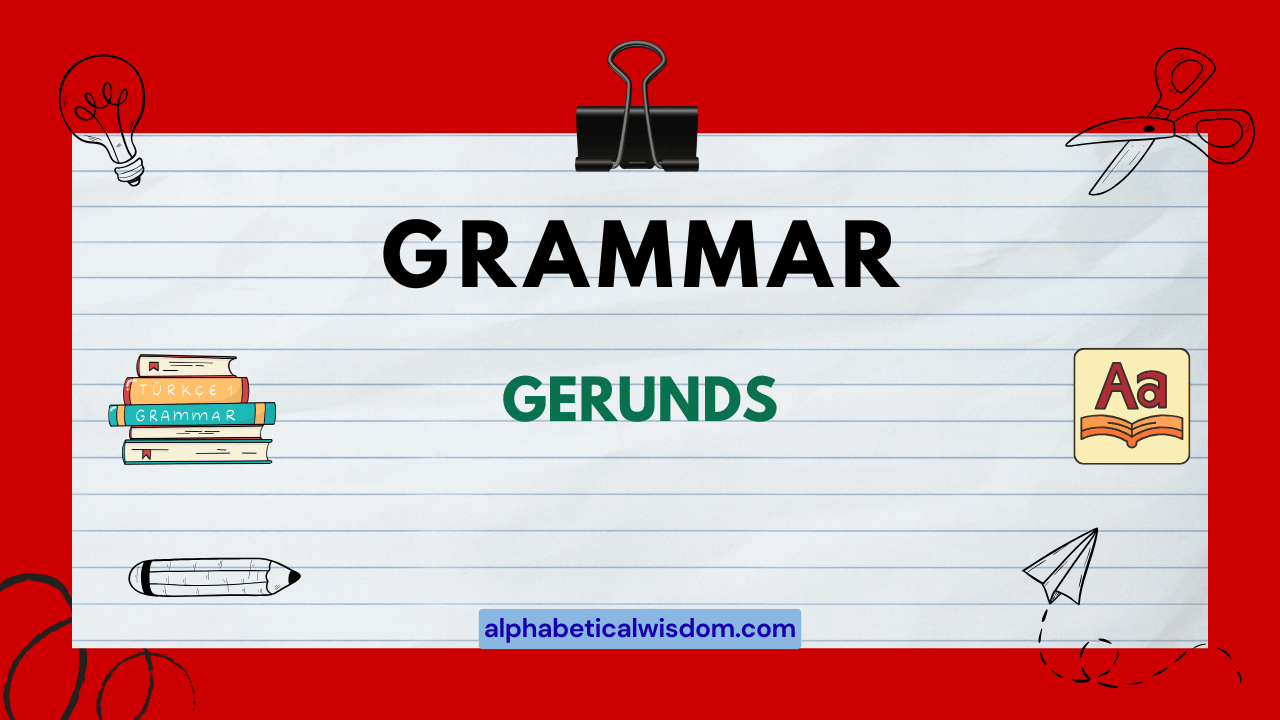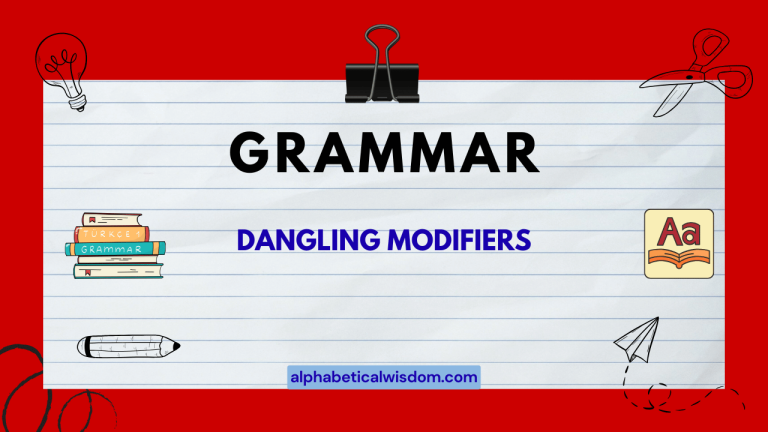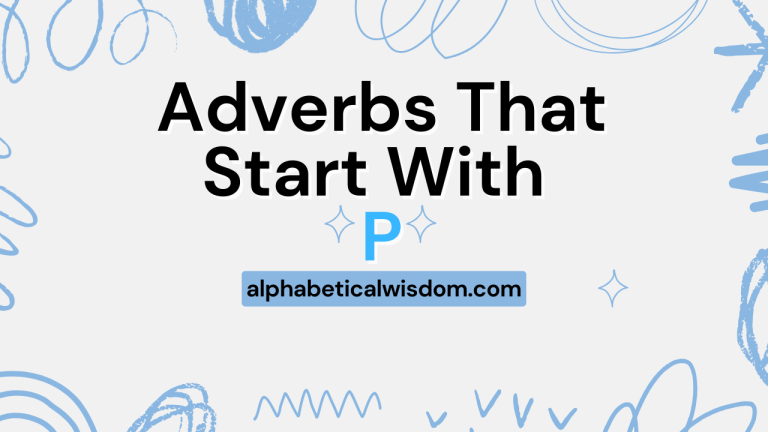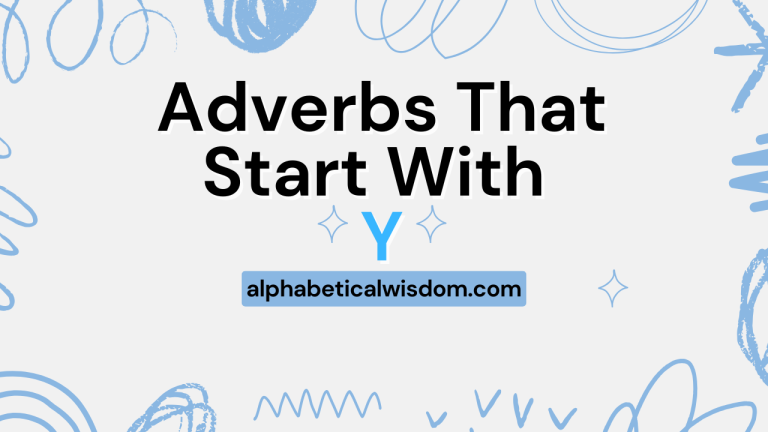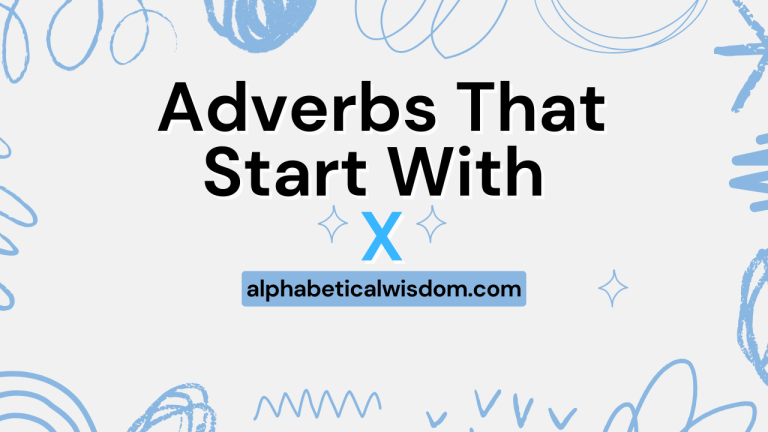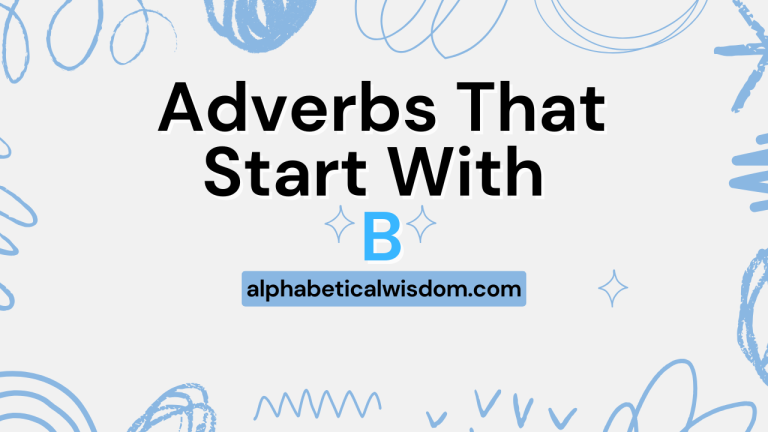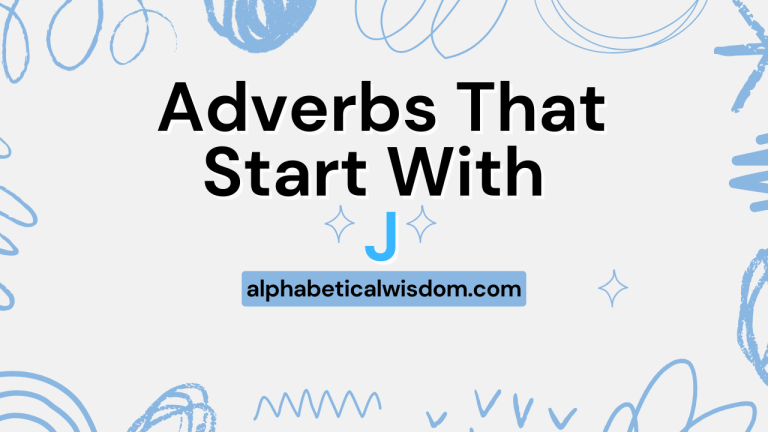Gerunds: Mastering the Verb-Turned-Noun in English Grammar
Understanding gerunds is crucial for mastering English grammar. Gerunds, verb forms ending in “-ing” that function as nouns, add versatility and depth to your sentence construction.
This article provides a comprehensive guide to gerunds, covering their definition, structure, types, usage rules, common mistakes, and advanced applications. Whether you’re a beginner or an advanced learner, this guide will equip you with the knowledge and practice you need to confidently use gerunds in your writing and speech.
Table of Contents
- Introduction
- Definition of a Gerund
- Structural Breakdown of Gerunds
- Types of Gerunds
- Examples of Gerunds in Sentences
- Usage Rules for Gerunds
- Common Mistakes with Gerunds
- Practice Exercises
- Advanced Topics: Gerunds vs. Participles
- Frequently Asked Questions (FAQ)
- Conclusion
Definition of a Gerund
A gerund is a verb form ending in “-ing” that functions as a noun. This means it can take on the roles of a subject, object, complement, or appositive within a sentence. Unlike participles, which act as adjectives or parts of a verb phrase, gerunds behave solely as nouns. Recognizing this distinction is key to using gerunds correctly.
The function of a gerund is to name an activity or action. It allows you to treat actions as things, which is essential for expressing complex ideas. For example, instead of just saying “I like to swim,” you can say “I enjoy swimming,” where “swimming” is the gerund acting as the object of the verb “enjoy.”
Structural Breakdown of Gerunds
The basic structure of a gerund is simple: [verb + -ing]. However, gerunds can be modified and expanded upon, just like other nouns. They can be preceded by adjectives, followed by prepositional phrases, or even take objects themselves.
Consider the following breakdown:
- Basic Gerund: Reading is my favorite hobby.
- Gerund with Adjective: Careful reading is essential for understanding complex texts.
- Gerund with Prepositional Phrase: Reading in the library is very peaceful.
- Gerund with Object: Reading novels is a great way to relax.
Understanding these structural variations will help you create more sophisticated and nuanced sentences using gerunds.
Types of Gerunds
While all gerunds function as nouns, they can be further categorized based on their form and tense. The main types include simple gerunds, perfect gerunds, and passive gerunds.
Simple Gerunds
Simple gerunds are the most common type, formed by adding “-ing” to the base form of the verb. They refer to an action in general or an action happening at the same time as the main verb.
Examples:
- Swimming is good exercise.
- I enjoy painting landscapes.
- She avoids speaking in public.
Perfect Gerunds
Perfect gerunds are formed using “having + past participle.” They refer to an action that was completed before the action of the main verb. This allows you to express a sequence of events with the gerund emphasizing the completion of the earlier action.
Examples:
- He regretted having wasted his time.
- Having finished the project, she felt relieved.
- They were accused of having stolen the documents.
Passive Gerunds
Passive gerunds are formed using “being + past participle.” They indicate that the subject of the gerund is receiving the action, rather than performing it. This is useful when you want to emphasize the recipient of the action.
Examples:
- She doesn’t like being interrupted.
- Being chosen for the team was a great honor.
- He risked being caught by the police.
Examples of Gerunds in Sentences
This section provides numerous examples of gerunds used in various sentence structures. The examples are categorized by the gerund’s function in the sentence: subject, object, complement, and object of a preposition.
Gerunds as Subjects
When a gerund acts as the subject of a sentence, it performs the action of the verb.
The following table shows examples of gerunds acting as subjects in sentences.
| Sentence | Gerund |
|---|---|
| Reading is a wonderful way to relax. | Reading |
| Swimming makes me feel refreshed. | Swimming |
| Dancing is her passion. | Dancing |
| Writing helps me express my thoughts. | Writing |
| Singing is a great stress reliever. | Singing |
| Cooking can be very therapeutic. | Cooking |
| Traveling broadens your perspective. | Traveling |
| Learning is a lifelong process. | Learning |
| Exercising is important for your health. | Exercising |
| Hiking is a great way to enjoy nature. | Hiking |
| Gardening can be a very rewarding hobby. | Gardening |
| Painting allows for creative expression. | Painting |
| Coding is a valuable skill in today’s world. | Coding |
| Volunteering makes a positive impact on the community. | Volunteering |
| Meditating promotes inner peace. | Meditating |
| Baking is a delicious way to spend an afternoon. | Baking |
| Fishing can be a very relaxing pastime. | Fishing |
| Camping allows you to disconnect from technology. | Camping |
| Knitting is a cozy and creative activity. | Knitting |
| Photography captures beautiful moments in time. | Photography |
| Jogging is a simple and effective workout. | Jogging |
| Birdwatching connects you with the natural world. | Birdwatching |
| Playing music brings joy to many. | Playing |
| Sewing allows you to create custom clothing. | Sewing |
| Drawing is a fundamental artistic skill. | Drawing |
Gerunds as Objects
When a gerund acts as the object of a verb, it receives the action of the verb.
The following table shows examples of gerunds acting as objects of verbs.
| Sentence | Gerund |
|---|---|
| I enjoy reading novels. | reading |
| She hates doing chores. | doing |
| They love playing video games. | playing |
| He avoids speaking in public. | speaking |
| We appreciate hearing your feedback. | hearing |
| She considered moving to a new city. | moving |
| They postponed making a decision. | making |
| He finished writing his book. | writing |
| I practice playing the guitar every day. | playing |
| She recommended visiting the museum. | visiting |
| We anticipate receiving your application. | receiving |
| He admitted stealing the money. | stealing |
| She denied knowing anything about it. | knowing |
| They regret missing the opportunity. | missing |
| I remember seeing him there. | seeing |
| She suggested going to the movies. | going |
| They dislike waiting in long lines. | waiting |
| He enjoys collecting stamps. | collecting |
| We appreciate hearing your concerns. | hearing |
| She loves baking cookies. | baking |
| I miss traveling abroad. | traveling |
| He quit smoking last year. | smoking |
| She recommends reading this book. | reading |
| They enjoy watching movies together. | watching |
| I hate cleaning the house. | cleaning |
Gerunds as Complements
When a gerund acts as a complement, it completes the meaning of a linking verb, such as “is,” “are,” “was,” or “were.”
The following table shows examples of gerunds acting as complements.
| Sentence | Gerund |
|---|---|
| My favorite activity is reading. | reading |
| Her job is teaching English. | teaching |
| His hobby is collecting stamps. | collecting |
| Their passion is dancing. | dancing |
| What I enjoy most is hiking. | hiking |
| The most important thing is learning. | learning |
| My greatest fear is flying. | flying |
| Her main focus is writing her novel. | writing |
| His responsibility is managing the team. | managing |
| Their goal is winning the championship. | winning |
| What she loves is baking. | baking |
| His dream is traveling the world. | traveling |
| Her talent is singing. | singing |
| His strength is problem-solving. | problem-solving |
| Their expertise is coding. | coding |
| What he hates is waiting. | waiting |
| Her specialty is cooking Italian food. | cooking |
| His interest is studying history. | studying |
| Their concern is protecting the environment. | protecting |
| What matters most is being happy. | being |
| My purpose is helping others. | helping |
| Her intention is improving her skills. | improving |
| His aim is achieving his goals. | achieving |
| Their priority is ensuring safety. | ensuring |
| What she values is honesty. | honesty |
Gerunds as Objects of Prepositions
When a gerund acts as the object of a preposition, it follows a preposition such as “of,” “in,” “on,” “for,” “from,” “by,” “at,” “about,” or “to.”
The following table shows examples of gerunds acting as objects of prepositions.
| Sentence | Gerund |
|---|---|
| She is good at painting. | painting |
| He is interested in learning new languages. | learning |
| They are tired of waiting. | waiting |
| I am excited about traveling to Europe. | traveling |
| She is responsible for managing the project. | managing |
| He is known for writing poetry. | writing |
| They are skilled at solving problems. | solving |
| I am grateful for having the opportunity. | having |
| She is afraid of flying. | flying |
| He is dedicated to helping others. | helping |
| They are committed to improving the community. | improving |
| I am dependent on receiving your support. | receiving |
| She is focused on achieving her goals. | achieving |
| He is passionate about protecting the environment. | protecting |
| They are successful in running their business. | running |
| I am worried about missing the deadline. | missing |
| She is enthusiastic about learning new things. | learning |
| He is experienced in managing teams. | managing |
| They are proficient in coding. | coding |
| I am delighted by hearing your good news. | hearing |
| She is known for being kind. | being |
| He is admired for his honesty. | his |
| They are respected for their dedication. | their |
| I am thankful for having friends like you. | having |
| She is excited about starting her new job. | starting |
Usage Rules for Gerunds
Using gerunds correctly involves understanding certain rules and patterns. Here are some key rules to keep in mind:
- After Prepositions: Use a gerund after a preposition (e.g., of, in, on, for, from, by, at, about, to). Example: “She is interested in learning new languages.”
- After Certain Verbs: Certain verbs are typically followed by gerunds, not infinitives. These include enjoy, avoid, consider, finish, mind, suggest, appreciate, postpone, practice, recommend, anticipate, admit, deny, regret, remember, dislike, hate, love. Example: “I enjoy reading novels.”
- As Subjects or Objects: Gerunds can function as the subject or object of a sentence. Example (subject): “Swimming is good exercise.” Example (object): “He hates doing chores.”
- Possessive Pronouns/Nouns Before Gerunds: Use a possessive pronoun or noun before a gerund to show who or what is performing the action. Example: “I appreciate your helping me.” or “I appreciate John’s helping me.”
Exceptions: Some verbs can be followed by either a gerund or an infinitive, sometimes with a change in meaning. These include remember, forget, regret, stop.
Example:
- Remembering to lock the door is important. (Gerund: remembering the action)
- I remembered to lock the door. (Infinitive: remembering and then performing the action)
Common Mistakes with Gerunds
One of the most common mistakes is confusing gerunds with present participles, both of which end in “-ing.” Remember, gerunds function as nouns, while present participles function as adjectives or parts of a verb phrase.
Another common mistake is using an infinitive instead of a gerund after certain verbs or prepositions.
Here are some examples of common mistakes and their corrections:
| Incorrect | Correct | Explanation |
|---|---|---|
| I enjoy to swim. | I enjoy swimming. | “Enjoy” is followed by a gerund, not an infinitive. |
| She is good at to paint. | She is good at painting. | “At” is a preposition and should be followed by a gerund. |
| Swimming is being fun. | Swimming is fun. | “Being” is unnecessary in this context. |
| He avoids for speaking in public. | He avoids speaking in public. | The preposition “for” is incorrect; the correct sentence does not need a preposition. |
| I appreciate you to help me. | I appreciate your helping me. | Use a possessive pronoun before the gerund. |
| The running water sounds nice. | Running is good exercise. | The first sentence “running” is a present participle (modifying “water”). The second sentence uses “running” as a gerund. |
| I am interesting in learning. | I am interested in learning. | “Interested” is the correct adjective form. |
| She finished to write her book. | She finished writing her book. | “Finish” is followed by a gerund. |
| They are exciting about traveling. | They are excited about traveling. | “Excited” is the correct adjective form. |
| He is responsible of managing the project. | He is responsible for managing the project. | The correct preposition is “for,” not “of.” |
Practice Exercises
Test your understanding of gerunds with these practice exercises. Identify the gerunds in the sentences and determine their function (subject, object, complement, or object of a preposition).
Then, complete the sentences with the correct form of the verb in parentheses.
Exercise 1: Identifying Gerunds
Identify the gerund in each sentence and its function.
| Question | Gerund | Function |
|---|---|---|
| 1. Reading is my favorite pastime. | Reading | Subject |
| 2. She enjoys dancing. | Dancing | Object |
| 3. His hobby is collecting stamps. | Collecting | Complement |
| 4. They are good at solving problems. | Solving | Object of a Preposition |
| 5. Swimming makes me feel refreshed. | Swimming | Subject |
| 6. He avoids speaking in public. | Speaking | Object |
| 7. Her passion is painting. | Painting | Complement |
| 8. I am interested in learning new languages. | Learning | Object of a Preposition |
| 9. Writing can be very therapeutic. | Writing | Subject |
| 10. She hates doing chores. | Doing | Object |
Exercise 2: Completing Sentences with Gerunds
Complete each sentence with the correct gerund form of the verb in parentheses.
| Question | Answer |
|---|---|
| 1. I enjoy _______ (read) novels. | reading |
| 2. She is good at _______ (paint). | painting |
| 3. He avoids _______ (speak) in public. | speaking |
| 4. They are interested in _______ (learn) new languages. | learning |
| 5. _______ (swim) is good exercise. | Swimming |
| 6. She finished _______ (write) her book. | writing |
| 7. He is responsible for _______ (manage) the project. | managing |
| 8. They are tired of _______ (wait). | waiting |
| 9. I am excited about _______ (travel) to Europe. | traveling |
| 10. She is known for _______ (sing) beautifully. | singing |
Exercise 3: Error Correction
Identify and correct the errors in the following sentences related to gerund usage.
| Question | Corrected Answer |
|---|---|
| 1. I enjoy to swim in the ocean. | I enjoy swimming in the ocean. |
| 2. She is good at to paint portraits. | She is good at painting portraits. |
| 3. He avoids for speak in public. | He avoids speaking in public. |
| 4. They are interesting in learn new languages. | They are interested in learning new languages. |
| 5. Swimming is be good exercise. | Swimming is good exercise. |
| 6. She finished to write her novel last year. | She finished writing her novel last year. |
| 7. He is responsible of manage the team. | He is responsible for managing the team. |
| 8. They are tired for wait in the long line. | They are tired of waiting in the long line. |
| 9. I am exciting about travel to new places. | I am excited about traveling to new places. |
| 10. She is known for be sing beautifully. | She is known for singing beautifully. |
Advanced Topics: Gerunds vs. Participles
The distinction between gerunds and present participles can be challenging, as both end in “-ing.” The key difference lies in their function within a sentence. A gerund always functions as a noun, while a present participle functions as an adjective or part of a verb phrase.
Consider these examples:
- Gerund: Reading is my favorite hobby. (“Reading” is the subject of the sentence.)
- Present Participle: I saw her reading a book. (“Reading” is part of the verb phrase “was reading.”)
- Present Participle as Adjective: The running water sounded refreshing. (“Running” describes the water.)
To further distinguish between them, ask yourself: Can I replace the “-ing” word with a noun? If yes, it’s likely a gerund.
If it’s describing something or part of a verb tense, it’s likely a present participle.
Frequently Asked Questions (FAQ)
- What is the difference between a gerund and an infinitive?
Both gerunds and infinitives can function as nouns, but they have different forms and are used after different verbs and prepositions. A gerund is a verb form ending in “-ing,” while an infinitive is the base form of the verb preceded by “to.” Some verbs are followed by gerunds (e.g., enjoy), while others are followed by infinitives (e.g., want). Some verbs can take either, sometimes with a change in meaning.
- Can a gerund have an object?
Yes, a gerund can take an object, just like a verb. For example, in the sentence “I enjoy reading novels,” “reading” is the gerund, and “novels” is its object. The entire phrase “reading novels” functions as the object of the verb “enjoy.”
- How can I identify a gerund in a sentence?
Look for a word ending in “-ing” that is functioning as a noun. It can be the subject, object, complement, or object of a preposition. If you can replace the “-ing” word with a noun and the sentence still makes sense, it’s likely a gerund.
- What is a possessive adjective or noun doing before a gerund?
Using a possessive pronoun (my, your, his, her, its, our, their) or a noun in possessive form (John’s, Mary’s) before a gerund indicates who or what is performing the action described by the gerund. For instance, “I appreciate your helping me” means I appreciate that you are helping me, not just the act of helping in general.
- Are there any verbs that can be followed by either a gerund or an infinitive with no change in meaning?
Yes, there are a few verbs, but they are rare. Usually, when a verb can be followed by either a gerund or an infinitive, there is a subtle change in meaning. For example, “I like swimming” and “I like to swim” are very similar, but “I like swimming” implies a general enjoyment of the activity, while “I like to swim” can imply a specific instance or purpose.
- What are some common verbs that are always followed by a gerund?
Some common verbs that are always followed by a gerund include: enjoy, avoid, consider, finish, mind, suggest, appreciate, postpone, practice, recommend, anticipate, admit, deny, regret, remember, dislike, hate, love.
- Can a gerund be part of a prepositional phrase?
Yes, a gerund can be the object of a preposition, forming a prepositional phrase. For example, in the sentence “She is good at painting,” “painting” is the gerund, and “at painting” is the prepositional phrase.
- What is the difference between a simple gerund and a perfect gerund?
A simple gerund (e.g., swimming) refers to an action in general or an action happening at the same time as the main verb. A perfect gerund (e.g., having swum) refers to an action that was completed before the action of the main verb.
- What is a passive gerund?
A passive gerund (being + past participle) indicates that the subject of the gerund is receiving the action, rather than performing it. For example, “She doesn’t like being interrupted.”
- How do I avoid common mistakes when using gerunds?
Pay close attention to the verbs and prepositions that precede the gerund. Make sure you are using the correct form (gerund vs. infinitive) and that the sentence structure is grammatically correct. Practice identifying gerunds in sentences and using them in your own writing.
Conclusion
Mastering gerunds is essential for enhancing the fluency and accuracy of your English. By understanding their definition, structure, types, and usage rules, you can confidently incorporate them into your writing and speech.
Remember to distinguish between gerunds and present participles, and pay attention to the verbs and prepositions that govern their use.
Practice identifying and using gerunds in various contexts to solidify your understanding. Review the examples and exercises provided in this article regularly.
With consistent effort, you’ll be able to wield gerunds effectively, adding depth and sophistication to your English communication skills. Keep practicing and refining your knowledge, and you’ll soon find that gerunds become a natural and invaluable part of your linguistic toolkit.
